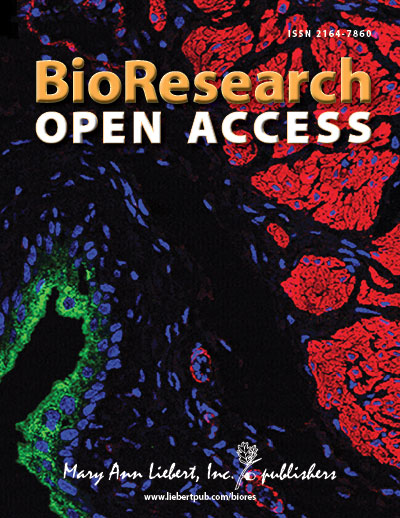For Immediate Release
Cryostorage and Thawing Temperatures Critical to Survival of Bioengineered Liver Tissue
Contact: Jennifer Gatti
914-740-2149
jgatti@liebertpub.com

New Rochelle, NY, September 16, 2016— A new study determined the optimal temperatures for cryostorage and thawing of bioengineered liver tissue to maximize its viability for use in a bioartificial liver device. The availability of on-demand liver samples for tissue engineering applications will require proven methods for cryopreservation of the engineered liver tissue for storage and transport and an effective thawing strategy, as described in an article published in BioResearch Open Access, a peer-reviewed open access journal from Mary Ann Liebert, Inc., publishers. The article is available free on the BioResearch Open Access website.
Peter Kilbride, John Morris, PhD, and coauthors from Asymptote Ltd., Cambridge, and ULC Institute for Liver and Digestive Health and Department of Surgery, Royal Free Hospital Campus, London, U.K., compared direct thawing from liquid nitrogen storage at -196oC to an interrupted storage approach in which the tissue was maintained at an intermediate temperature of -80oC, on dry ice, for one to several days before completely thawed. These two methods led to significantly different outcomes in terms of post-thaw tissue viability and function, as reported in the article "Impact of Storage at -80oC on Encapsulated Liver Spheroids After Liquid Nitrogen Storage."
“It is essential that bioengineered tissues and constructs for clinical therapy are not damaged or destroyed during the transport and/or storage process,” says BioResearch Open Access Editor Jane Taylor, PhD, Edinburgh Medical School and Biomedical Sciences, University of Edinburgh, Scotland. “This article highlights some of the issues that need to be considered for the transportation of alginate encapsulated liver spheroids for use in a bioartificial liver device.”
About the Journal
BioResearch Open Access is a peer-reviewed open access journal led by Editor-in-Chief Robert Lanza, MD, Head of Astellas Global Regenerative Medicine and Chief Scientific Officer, Astellas Institute for Regenerative Medicine (Marlborough, MA), and Editor Jane Taylor, PhD, MRC Centre for Regenerative Medicine, University of Edinburgh. The Journal provides a new rapid-publication forum for a broad range of scientific topics including molecular and cellular biology, tissue engineering and biomaterials, bioengineering, regenerative medicine, stem cells, gene therapy, systems biology, genetics, biochemistry, virology, microbiology, and neuroscience. All articles are published within 4 weeks of acceptance and are fully open access and posted on PubMed Central. All journal content is available on the BioResearch Open Access website.
About the Publisher
Mary Ann Liebert, Inc., publishers is a privately held, fully integrated media company known for establishing authoritative peer-reviewed journals in many areas of science and biomedical research, including DNA and Cell Biology, Tissue Engineering, Stem Cells and Development, Human Gene Therapy, HGT Methods, and HGT Clinical Development, and AIDS Research and Human Retroviruses. Its biotechnology trade magazine, GEN (Genetic Engineering & Biotechnology News), was the first in its field and is today the industry’s most widely read publication worldwide. A complete list of the firm’s 80 journals, books, and newsmagazines is available on the Mary Ann Liebert, Inc., publishers website.